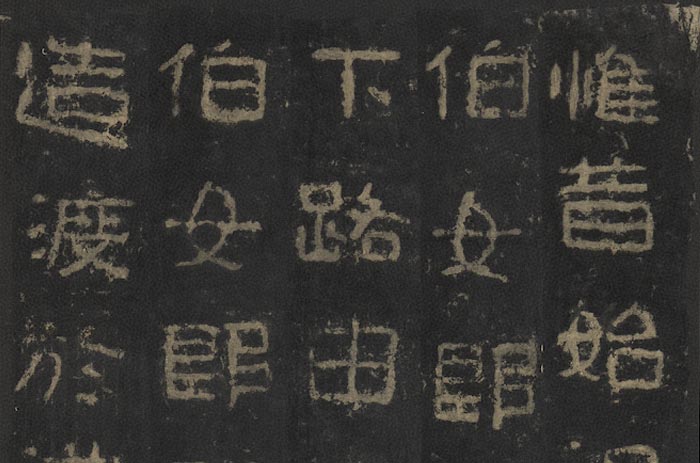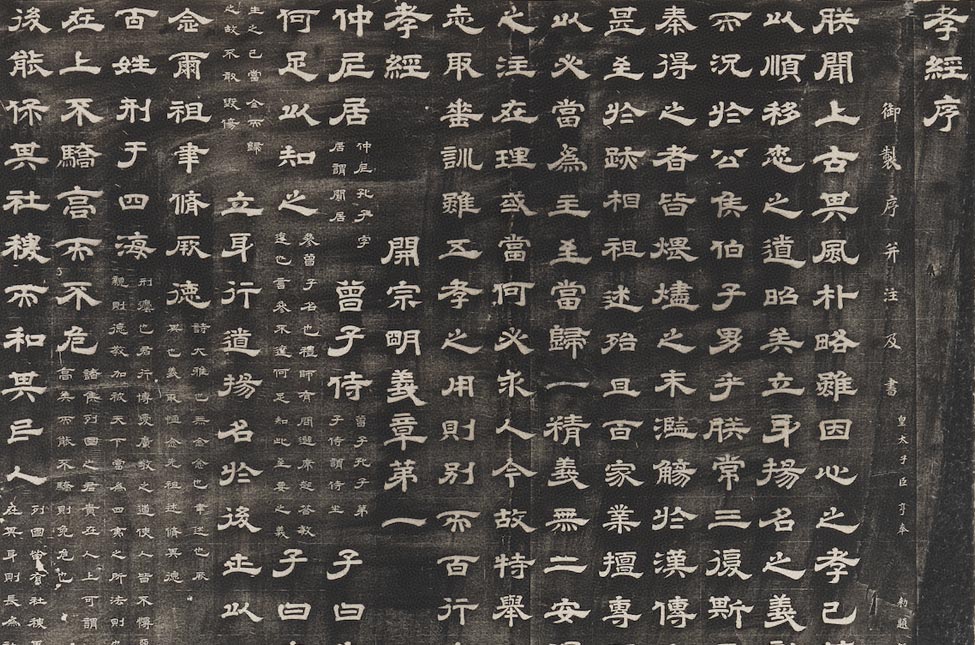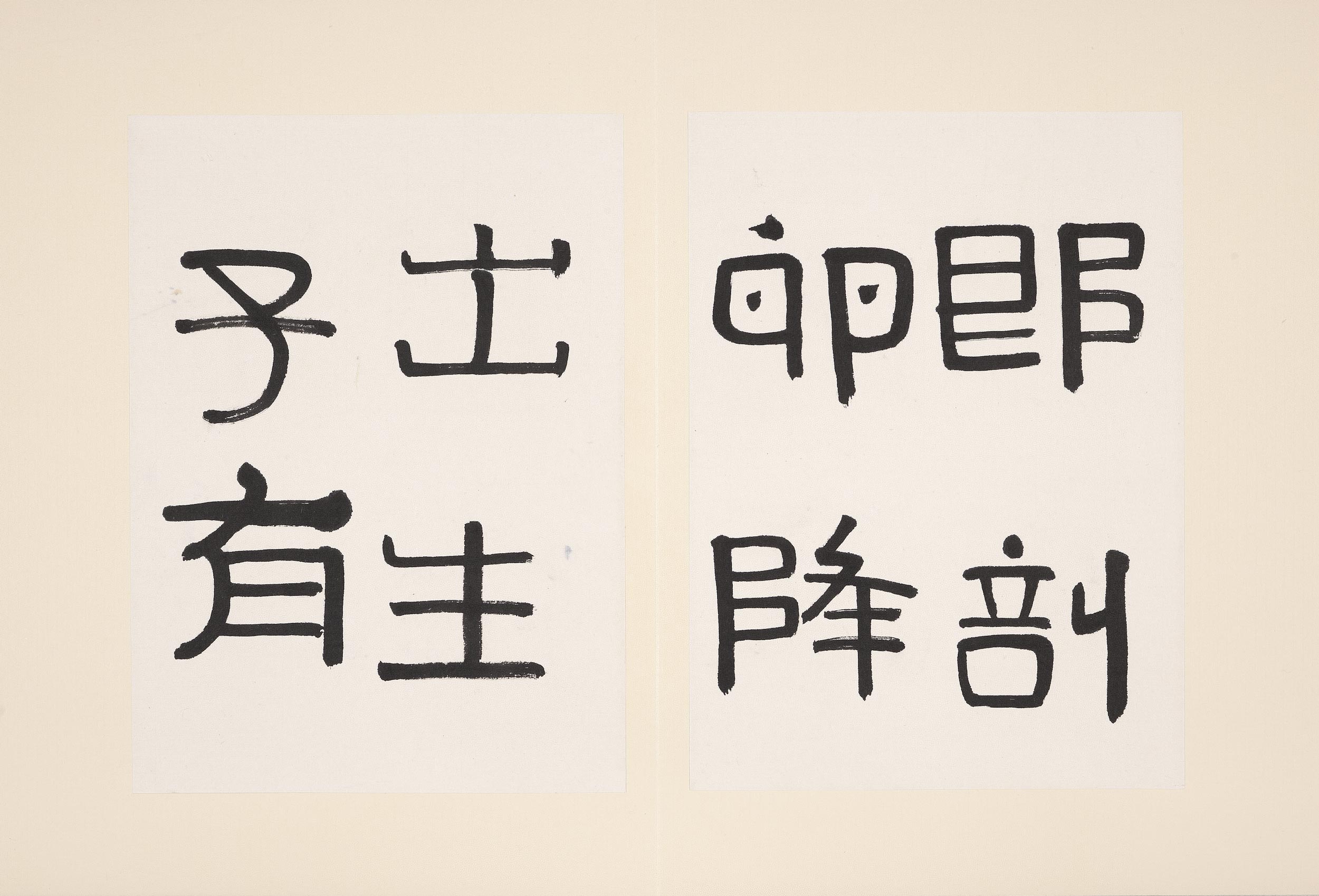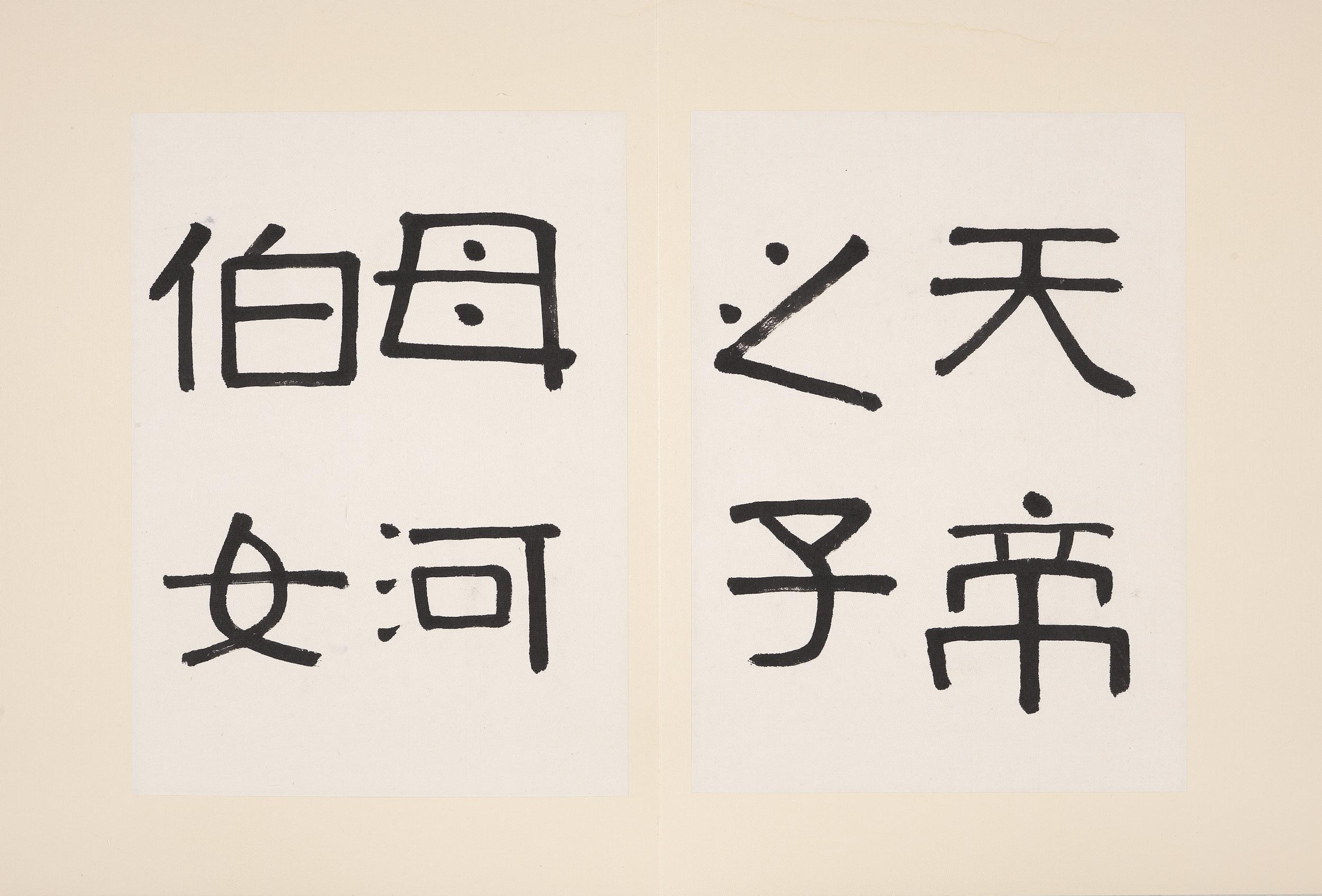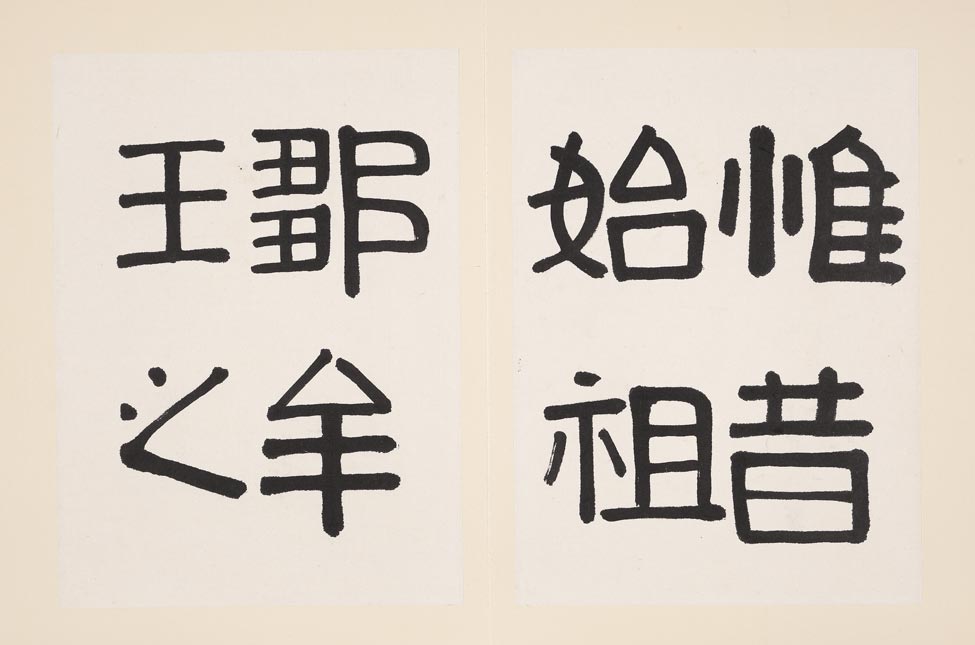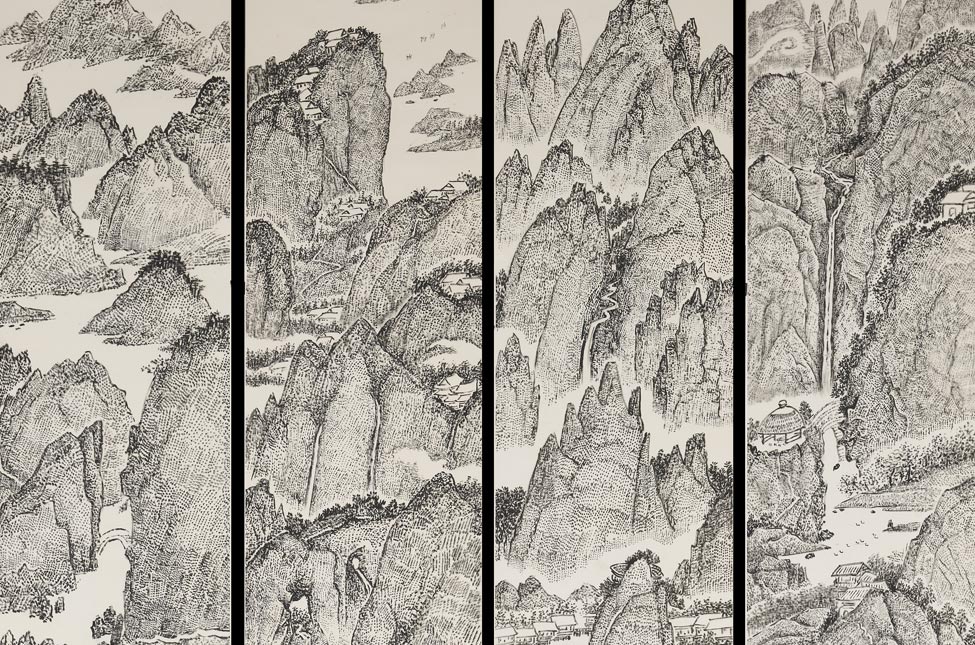Selections
-
Rubbing of the King Hotae Stele
- Anonymous, Goguryeo Kingdom (37 BCE-668 CE), Korea
This is a rubbing from the tomb stele of the nineteenth king of the Goguryeo (Goryeo) Kingdom (Gwanggaeto the Great, or King Hotae), which extended from the Korean peninsula into Manchuria. The stele was erected in 414 in what is now Ji'an City of Jilin Province in China. It records the mythical founding of the kingdom and King Hotae's merits in conquering Baekje, Japanese, and Eastern Buyeo forces as well as coming to the aid of the Silla kingdom. Also mentioning regulations for the protection of the mausoleum, the stele is an important source for the study of early East Asian history. The style of calligraphy here is similar to both clerical and regular script. The brushwork is quite simple with few rising upturned strokes and little variation between rounded and angular as well as fine and coarse strokes. The character forms follow the lines, being mostly rectangular or flattened in shape. The framework is angular and the effect not especially refined, adding a sense of archaic simplicity and sincere straightforwardness to it.
-
Rubbing of The Classic of Filial Piety in Stone
- Emperor Xuanzong (685-762), Tang dynasty
In 745, the Tang emperor Xuanzong composed a preface and commentaries to The Classic of Filial Piety, which was engraved in stone and erected at the Imperial University. Combining the clerical script styles of the "Huashan Stele" from the Eastern Han dynasty and the "Stone Classics in Three Scripts" from the Wei dynasty, the horizontal, left and right diagonally falling, and hooked strokes of the original all expanded left and right to express the beauty of symmetry. Evidence of the strong pressing and quick lifting of the brush creates a beautiful symmetry that gives a sense of fullness, bravura, and heroic spirit. The angular sides, short diagonals, and vertical hooks incorporate elements of regular script, revealing many places that are angular and with the brush tip exposed. The character forms throughout the stele are upright and the composition tight, the arrangement of blank space also even. The lines are regulated for a handsome and majestic quality that reflects the manner of the High Tang dynasty.
-
Copy of the King Hotae Stele
- Chuang Yen (1899-1980), Republican period
Chuang Yen was an art historian and calligrapher who also once served as Deputy Director of the National Palace Museum.
This album represents Chuang Yen's copy of the "King Hotae Stele" that he did in 1976 and which was donated to the National Palace Museum by the brothers Chuang Yin, Chuang Che, and Chuang Ling. The script type and character forms here are similar to the original, but the clerical script is rendered similar to seal script with much centered and rounded brushwork. It reveals the so-called "reverse entry, calm exit" technique as well as "expose the tail and hide the head"of the strokes. Combined with variations in the line thickness and ink moisture, an interesting quality to the brushwork pervades this album. There is also distance between the upper and lower characters, but the space between the left and right ones is reduced. It creates an arrangement of adjacent characters that departs from the rules of convention in calligraphy to reveal a free and easy manner of returning to original innocence and simplicity. -
Precipitous Peaks and Layered Hills (right)
Layers of Mountains and Waters (second from right)
Lofty Mount Lu (second from left)
Traveling Among Ancient Cedars (left)- Chang Kuang-pin (1915-2016), Republican period
Chang Kuang-pin (sobriquets Yuhuan, Chiweng, and others) was a painter and calligrapher as well as an art historian.
These four hanging scrolls were done in 2008 and donated by the artist himself to the National Palace Museum. In these narrow scrolls, the painter depicted layers of mountains and waters with springs and cascades scattered throughout to create scenes of remote and tranquil valleys. The artist first used a centered brush with dry ink to outline the forms and then arranged ink dots within them to build up the volume and weightiness of the mountains and landscape, which are highlighted against the pure and winding waters. From a distance, these scrolls have the poetic effect of traditional ink painting, but upon closer inspection, they reveal a modern sense of abstraction and rationality. Each individual work has the force of a thousand leagues extending into the distance, but when viewed together the four scrolls create a bird's-eye effect for a much larger landscape with a majestic atmosphere.
Exhibit List
| Title | Artist | Period |
|---|---|---|
| Rubbing of the King Hotae Stele | Anonymous | Goguryeo Kingdom (37 BCE-668 CE), Korea |
| Rubbing of The Classic of Filial Piety in Stone | Emperor Xuanzong (685-762) | Tang dynasty |
| Copy of the King Hotae Stele | Chuang Yen (1899-1980) | Republican period |
| Layers of Mountains and Waters | Chang Kuang-pin | Republican period |
| Precipitous Peaks and Layered Hills | Chang Kuang-pin | Republican period |
| Traveling Among Ancient Cedars | Chang Kuang-pin | Republican period |
| Lofty Mount Lu | Chang Kuang-pin | Republican period |



